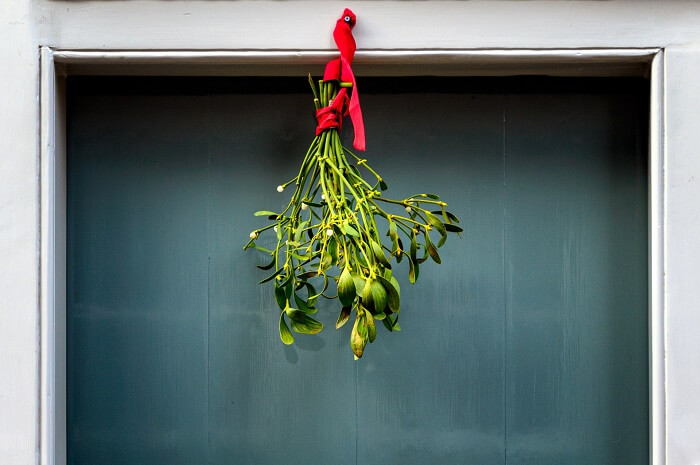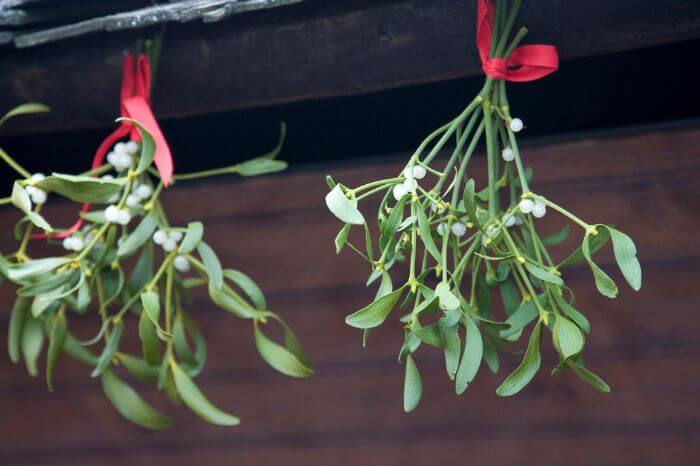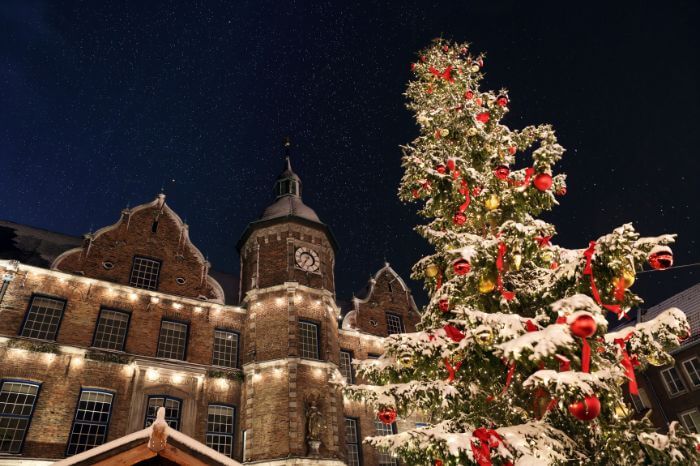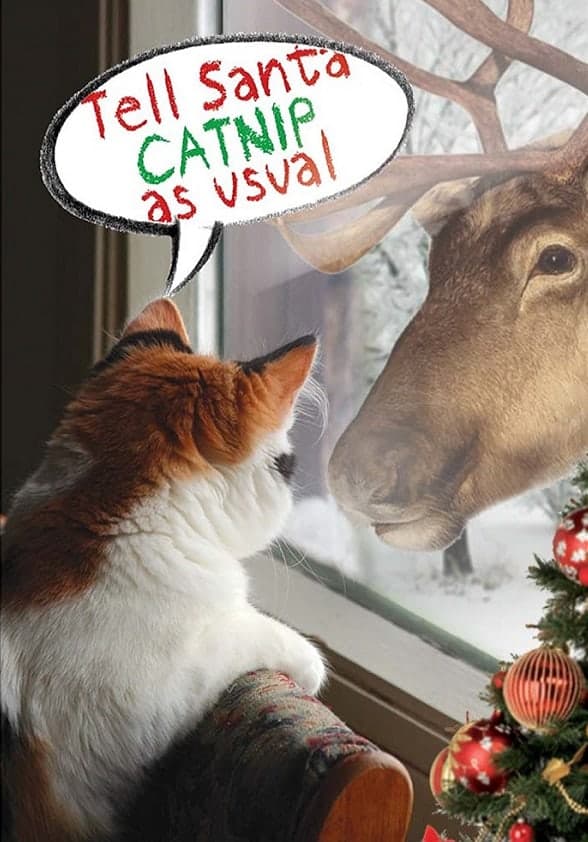Christmas Traditions: Why Do We Kiss Under The Mistletoe
As the holiday season approaches, we start to see familiar decorations and symbols everywhere. One of these symbols is mistletoe, which is often hung in doorways and other prominent places. But why do we kiss under the mistletoe? This Christmas tradition has a long history and several possible explanations.
One popular theory is that kissing under the mistletoe began as a pagan ritual. According to this theory, mistletoe was seen as a sacred plant with healing properties.
Druids would use mistletoe in their winter solstice celebrations, and it was believed to bring good luck and ward off evil spirits. Kissing under the mistletoe may have been a way to share in the plant’s mystical powers.
Another explanation for the mistletoe tradition is rooted in Norse mythology.
According to legend, the god Balder was killed by an arrow made of mistletoe. His mother, the goddess Frigg, wept tears onto the plant and brought Balder back to life.
As a result, Frigg declared that mistletoe would never again be used as a weapon and that anyone who passed under it should receive a kiss in honor of her son’s resurrection.
The History of Mistletoe
As we prepare for the holiday season, we often see mistletoe hanging in doorways and other prominent places. But have you ever wondered why we kiss under the mistletoe?
In this section, we’ll explore the history of mistletoe and how it became a part of Christmas traditions.
Ancient Beliefs
Mistletoe has a long history that dates back to ancient times. According to ancient beliefs, mistletoe was a powerful plant with healing properties. The Druids, who were members of a priestly class in ancient Celtic cultures, believed that mistletoe could cure illnesses and bring good luck.
As mistletoe was believed to have magical powers, it was often hung in homes and places of worship. People would stand under the mistletoe and make wishes, hoping that the plant’s magic would grant their desires.
Mistletoe in Norse Mythology
Mistletoe also played an important role in Norse mythology. According to a popular Norse legend, the god Baldur was killed by an arrow made of mistletoe.
Baldur’s mother, Frigg, was heartbroken by her son’s death and declared that mistletoe would never again be used to harm anyone.
As a symbol of love and peace, mistletoe was then hung in homes during the winter solstice, which was an important celebration in Norse culture. People would kiss under the mistletoe as a sign of love and friendship, and to honor Baldur’s memory.
Mistletoe in Celtic Culture
In Celtic culture, mistletoe was also a symbol of love and fertility. During the winter solstice, Druids would climb oak trees to harvest mistletoe, which was believed to have magical properties.
Men and women would exchange kisses under the mistletoe as a sign of friendship, and it was also believed that couples who kissed under the mistletoe would have a long and happy relationship.
Today, mistletoe remains a popular Christmas tradition, and many people still hang it in their homes during the holiday season. While the reasons for kissing under the mistletoe may have changed over time, the plant’s magical and romantic associations continue to make it a beloved part of Christmas celebrations.
The Evolution of Kissing Under the Mistletoe
As we explored earlier, the tradition of kissing under the mistletoe has roots in Norse mythology and has been a part of Christmas celebrations for centuries. However, the tradition evolved over time and took on different meanings and interpretations in different eras.
Victorian Era Traditions
In the Victorian era, the tradition of kissing under the mistletoe became more elaborate and formalized. According to History.com, the Victorians would hang mistletoe in their homes and decorate it with ribbons, ornaments, and other festive items.
They also developed specific rules and customs around kissing under the mistletoe, such as:
- Only men could initiate the kiss
- Each kiss had to be brief and chaste
- For each kiss, a berry had to be removed from the mistletoe
- Once all the berries were gone, no more kissing was allowed
These traditions added a sense of fun and excitement to Christmas celebrations and helped to make kissing under the mistletoe a more widespread and accepted tradition.
Modern Interpretations
Today, kissing under the mistletoe is still a popular Christmas tradition, but it has taken on new meanings and interpretations. For some, it is a romantic gesture between couples, while for others it is a fun and playful way to celebrate the holiday season with friends and family.
Some modern interpretations of kissing under the mistletoe include:
- Kissing anyone who happens to be standing under the mistletoe, regardless of gender or relationship status
- Using the mistletoe as a way to break the ice and start conversations with new people
- Using the mistletoe as a photo opportunity and taking selfies or group photos under the mistletoe
These modern interpretations show how the tradition of kissing under the mistletoe has evolved and adapted to fit the changing times and cultural norms.
The Science of Mistletoe
Have you ever wondered why we kiss under the mistletoe? Apart from being a Christmas tradition, mistletoe also has some interesting scientific properties that have been studied for centuries.
Mistletoe’s Medicinal Properties
Mistletoe has long been used in traditional medicine for its potential health benefits. According to some studies, mistletoe extracts may have anti-cancer properties and could be used as a complementary treatment for some types of cancer. Mistletoe extracts have also been shown to have immunomodulatory effects, which means they can help regulate the immune system.
However, it’s important to note that mistletoe extracts can be toxic if not used properly. Therefore, it’s essential to consult a healthcare professional before using mistletoe for any medicinal purposes.
The Chemicals Behind the Kiss
The reason we kiss under the mistletoe can be attributed to the plant’s chemical properties. Mistletoe contains several chemicals, including phoratoxins and viscotoxins, which can cause a range of effects on the human body.
Viscotoxins, for example, can cause a drop in blood pressure and heart rate, while phoratoxins can cause nausea and vomiting. However, in small doses, these chemicals may also have mild stimulant effects, which could explain why kissing under the mistletoe has become a popular Christmas tradition.
It’s worth noting that mistletoe berries are poisonous and should not be consumed. Therefore, it’s best to stick to the tradition of kissing under the mistletoe rather than trying to eat it.
In conclusion, mistletoe is not just a Christmas decoration but also a fascinating plant with potential medicinal properties. However, it’s essential to use mistletoe extracts under the guidance of a healthcare professional and avoid consuming the plant’s berries. So, this Christmas, let’s enjoy the tradition of kissing under the mistletoe while appreciating the science behind it.
Contemporary Mistletoe Traditions
Mistletoe in Pop Culture
Today, mistletoe is not only a Christmas decoration, but it has also become an integral part of popular culture. It is often featured in movies, TV shows, and songs, making it a recognizable symbol of Christmas romance.
For example, in the movie “Love Actually,” the character played by Andrew Lincoln declares his love for Keira Knightley’s character by holding up a series of cue cards, one of which reads “To me, you are perfect” under a sprig of mistletoe.
Moreover, mistletoe has also become a popular theme for holiday parties. Many people hang mistletoe in their homes and office spaces, encouraging others to kiss underneath it.
This tradition has become a fun and playful way to spread holiday cheer and bring people together.
Global Variations of Mistletoe Traditions
While mistletoe is widely associated with Christmas in Western cultures, it has different meanings and traditions in other parts of the world. For example, in Norse mythology, mistletoe was a symbol of peace and friendship, and enemies who met under it were obliged to lay down their weapons and embrace. Similarly, in some Native American cultures, mistletoe was believed to have healing powers and was used in medicinal practices.
In Mexico, mistletoe is known as “la flor de Noche Buena” or “the flower of the Holy Night” and is used to decorate homes during the Christmas season. In Japan, mistletoe is not associated with Christmas but is used as decoration during the New Year’s celebrations.
Overall, while mistletoe is a well-known Christmas tradition, its significance and use vary greatly across different cultures and traditions.
More Christmas Traditions
- Eggnog Origin and Traditions
- Yule Log Origin and Traditions
- Family Christmas Traditions to Make the Season Memorable
- German Christmas Traditions
- Mexican Christmas Traditions









